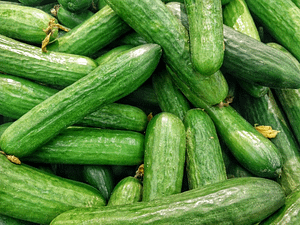
Tamarind is a fascinating tree that belongs to the family Fabaceae. This leguminous fruit tree is known for its long, brown pods with a sticky, sour-sweet pulp inside. With its origins in tropical Africa, tamarind has found its way into various cuisines around the world.
The Native Habitat of Tamarind
The native habitat of tamarind includes countries such as Sudan, Zambia, Nigeria, Kenya, and Malawi in tropical Africa. In these regions, the climate provides the ideal conditions for tamarind trees to thrive. The warm and humid environment, coupled with fertile soil and good drainage, allows tamarind trees to grow to their full potential.
Tamarind Cultivation in Tropical Areas
Due to its popularity and versatile uses, tamarind cultivation has spread to tropical areas across the globe. Countries such as India, Thailand, Mexico, and Brazil have embraced tamarind cultivation and have become major producers of this tangy fruit.
Tropical climates are considered ideal for tamarind trees, as they require a minimum temperature of around 68°F (20°C) for healthy growth. Tamarind trees thrive in areas with abundant sunlight, which is crucial for the tree’s photosynthesis process and the development of its delicious fruit.
In addition to sunlight, tamarind trees also require well-drained fertile soil. The tree’s roots need to access nutrients and water easily, and excessive moisture can lead to root rot. Proper soil drainage ensures that the tamarind tree remains healthy and productive.
The Culinary Uses of Tamarind
Tamarind is a versatile ingredient that adds a unique tangy flavor to various dishes. Its sour-sweet pulp is a popular addition to many cuisines, including Indian, Thai, Mexican, and Middle Eastern.
One of the most common uses of tamarind is in chutneys and sauces. Tamarind chutney, made by blending the pulp with spices, sugar, and other ingredients, is a delicious accompaniment to snacks and appetizers. It adds a refreshing burst of flavor to dishes like samosas, pakoras, and chaats.
Tamarind is also an essential ingredient in many savory dishes. Its tangy taste enhances the flavor of curries, stews, and soups. In Thai cuisine, tamarind is a key component of dishes like Pad Thai, providing a balance of sourness and sweetness.
Furthermore, tamarind is used in marinades and dressings, giving a zesty kick to grilled meats and salads. Its acidity helps tenderize meat and adds depth to the overall flavor profile.
Health Benefits of Tamarind
Aside from its culinary uses, tamarind also offers several health benefits. The fruit is rich in essential nutrients and compounds that contribute to overall well-being.
Tamarind is an excellent source of vitamin C, providing a significant portion of the recommended daily intake. Vitamin C is known for its immune-boosting properties and its role in collagen synthesis, which supports healthy skin and connective tissues.
The pulp of tamarind is also a good source of dietary fiber, which aids in digestion and helps maintain a healthy gut. Fiber adds bulk to the stool, preventing constipation and promoting regular bowel movements.
Furthermore, tamarind contains antioxidants, such as polyphenols, that help protect the body against oxidative stress and inflammation. These compounds have been linked to a reduced risk of chronic diseases, including heart disease and certain types of cancer.
Conclusion
Tamarind is a remarkable tree that has made its mark in the culinary world. With its tangy and versatile pulp, it adds a unique flavor to various dishes. Whether used in chutneys, curries, or marinades, tamarind is a delightful ingredient that enhances the overall taste profile of a dish.
Not only does tamarind bring flavor to the table, but it also offers numerous health benefits. From its vitamin C content to its fiber and antioxidant properties, tamarind contributes to overall well-being.
So, the next time you come across tamarind in a recipe or at a local market, embrace its tangy delights and explore the endless possibilities it offers in the world of cuisine.

